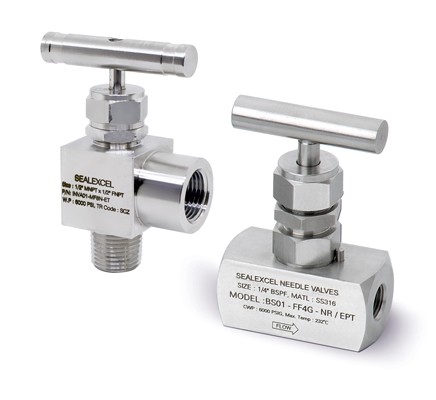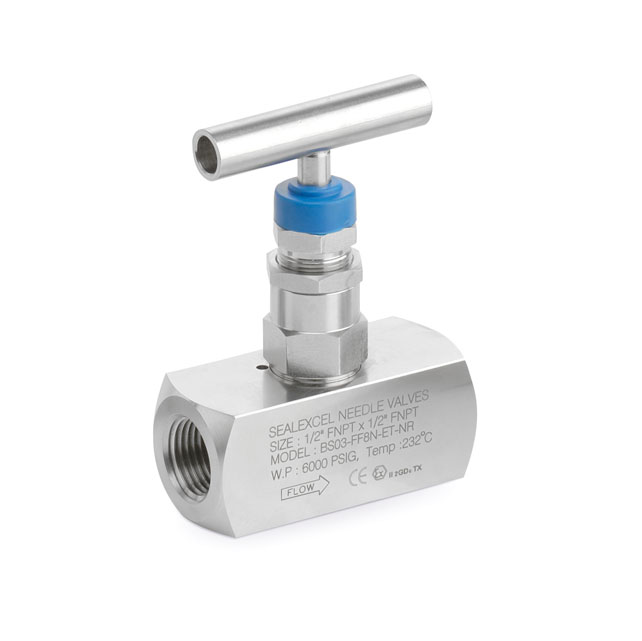
Needle Valves: Common Issues and Solutions
October 19, 2024Quality matters most when it comes to hydraulic system fluid flow regulation. In this situation, the hydraulic needle valve is useful. A hydraulic needle valve’s function is important for learning whether you’re an engineer, mechanic, or just interested in hydraulic systems. This article will explain how it functions, why it’s valuable, and why you might require one.
What is a Hydraulic Needle Valve?
A hydraulic needle valve is a kind of valve made to precisely control fluid flow in a hydraulic system. The needle-like pusher that controls the flow by moving in and out of the valve seat is what gives it its name. Because it can be adjusted finely, its design is perfect for situations where precision is essential.
A hydraulic needle valve allows for gradual adjustment, in contrast to conventional valves that just open or close. In systems where too much or too little flow might lead to issues, this means you can regulate the flow rate to a very precise level.
How Does a Hydraulic Needle Valve Work?
A hydraulic needle valve operates on a simple yet clever concept. Here is a detailed explanation:
- Structure: A handle, a stem, a plunger in the shape of a needle, and a valve seat make up the valve. The plunger fits into the seat after being cut to a tiny point.
- Adjustment: The plunger is moved up or down by the stem when the handle is turned. The fluid flow becomes limited when the plunger approaches the seat. On the other hand, the flow is increased as the plunger is moved further from the seat.
- Precision: You have exact control over the flow rate because to the stem’s tiny threads, which enable small changes.
The hydraulic needle valve is a dependable part of many hydraulic systems because of its straightforward but efficient operation.
Why Do You Need a Hydraulic Needle Valve?
Now that we understand its operation, let’s discuss the significance of a hydraulic needle valve. The following are some main reasons:
- Proper Flow Control
Even a slight variation in flow rate can have a significant effect on hydraulic systems. By enabling precise adjustments, a hydraulic needle valve guarantees that the system functions as intended.
- Control of Pressure
High pressure is a common operating condition for hydraulic systems. By regulating the flow, a needle valve helps reduce this pressure and shields other parts from harm.
- Versatility
Applications for hydraulic needle valves are many and include anything from aircraft systems to industrial machines. They are extremely adaptable due to their precision flow control and capacity to withstand high pressures.
- Durability
Hydraulic needle valves are long-lasting because they are made of sturdy materials like brass or stainless steel. They are a dependable option for difficult locations since they can tolerate severe circumstances.
- Safety
Hydraulic needle valves assist in minimising mishaps caused by abrupt pressure fluctuations or leakage by providing precise control over fluid flow.
Applications of Hydraulic Needle Valves
Numerous industries and applications make use of hydraulic needle valves. Here are a few typical instances:
- Oil and Gas: Used in factories and pipelines to regulate the flow of gas and oil.
- Manufacturing: Important for equipment that needs exact fluid control.
- Aerospace: Used to guarantee the safe and effective operation of aircraft hydraulic systems.
- Automotive: Located in hydraulic parts and brake systems.
- Laboratories: Working in experiments demands accurate fluid measurements.
Choosing the Right Valve
There are differences among hydraulic needle valves. When selecting one for your system, take into account the following factors:
- Material: Select an item that is flexible to the kind of fluid and system operating circumstances.
- Size: Verify that the valve fits the flow needs of your system.
- Pressure Rating: Verify that the valve is capable of managing your system’s highest pressure.
- Type of Connection: Verify that the valve’s connection type (flanged, threaded, etc.) works with your system.
- Ease of Adjustment: For accurate control, choose a valve with a smooth, adjustable grip.
Maintenance Tips for Hydraulic Needle Valves
Use these maintenance suggestions to keep your hydraulic needle valve in optimal condition:
- Regular Inspection: Look for indications of deterioration, corrosion, or wear.
- Clean the Valve: Get rid of any growth or waste that can impair operation.
- Lubricate Moving Parts: To guarantee smooth functioning, lubricate the stem and threads.
- Test for Leaks: Check the valve for leaks on a regular basis and take quick care of any problems.
- Replace When Necessary: Replace the valve as soon as possible if it is broken or no longer operating correctly.
Common Issues and Troubleshooting
Problems can happen with even the greatest hydraulic needle valves. Here are a few typical problems and solutions:
- Leakage: A worn-out plunger or seat is frequently the source of this. To fix the problem, swap out the damaged components.
- Stiff Handle: The handle may require cleaning or lubrication if it is difficult to turn.
- Inconsistent Flow: Debris in the valve may be the cause. The valve should be replaced and cleaned to return to normal operation.
Conclusion
Despite being a small component, a hydraulic needle valve has a significant impact on a hydraulic system. Because it controls pressure and enables precise flow management, this valve is crucial to preserving the efficiency and security of your system. Anyone working in manufacturing, oil and gas, or any other industry that uses hydraulic systems has to understand how a hydraulic needle valve works and why it’s important.

